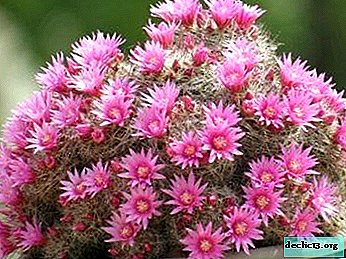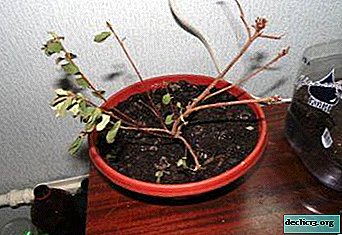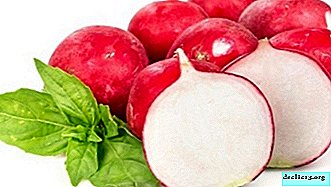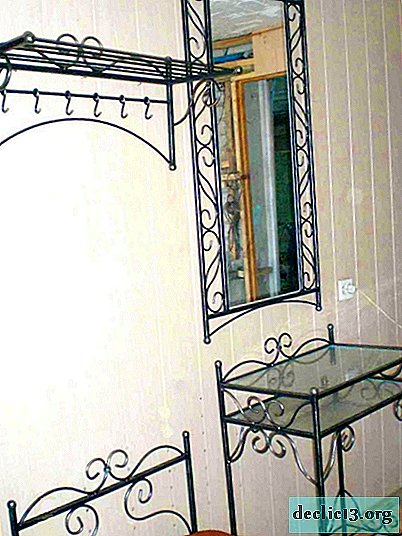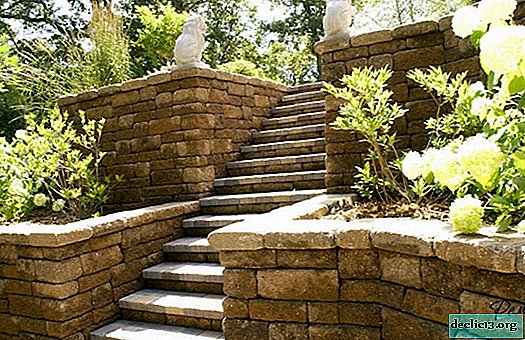Do rhododendrons need to be fed in the fall, what fertilizers are suitable and how to carry out the procedure correctly?
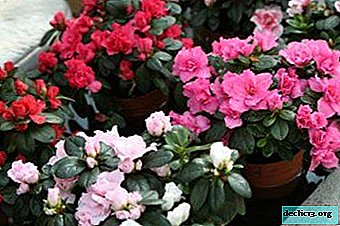
It was previously believed that rhododendrons do not need top dressing - and without that they grow perfectly.
However, fertilizers began to be used both in nurseries and in private farms, as new information appeared on the mineral nutrition of rhododendrons and other heathers.
How to feed the azalea in autumn? How to carry out the procedure for a home and outdoor flower? Prevention of possible problems with plant nutrition. The answers are further in the article.
What it is?
This is the introduction of organic and mineral fertilizers, which is necessary for better growth and development, disease prevention, maximum fruiting and restoration of strength after it.
Plant Life Cycle Before Winter
 Rhododendron, being a perennial shrub, prepares in autumn for a dormant period:
Rhododendron, being a perennial shrub, prepares in autumn for a dormant period:
- the length of the day is reduced, the temperature of the air and soil decreases, and this leads to a decrease in the number of growth hormones stimulating growth and an increase in growth inhibitors (inhibitors);
- metabolism becomes slower, the development of branches and leaves stops, cells lose moisture;
- some varieties of rhododendrons shed their leaves.
Is nutritional support needed at this time?
Since rhododendron is preparing to fall asleep for the winter, it does not need stimulating growth of feeding. However, after flowering, flower buds are laid for the next year. It is important that there are enough of them and they tolerate the winter well. This is the purpose of feeding rhododendron in the fall.
Is it necessary to transplant a plant? More information about how and when to carry out rhododendron transplant in the fall can be found here.
How to feed the azalea in autumn?
How to fertilize azalea? For autumn top dressing use phosphoric and potassium mineral fertilizers, as well as organic:
- rotted manure;
- bone flour;
- needles;
- peat.
You can mix them. The root system of rhododendrons is very compact and located close to the soil, therefore fertilizers are best applied in liquid form.
Mineral fertilizers
Since rhododendrons love acidic soils, physiologically acidic mineral fertilizers are used for top dressing:
- superphosphate - improves the laying of flower buds;
- magnesium sulfate - it is necessary on acidic soils where magnesium is contained in insufficient quantities;
- potassium sulfate (20 g per 1 sq. m) - Helps ripen rhododendron wood.
Organic
 Commonly used:
Commonly used:
- semi-rotted manure - increases the fertility of the soil, makes it moisture- and breathable;
- horn shavings (a mixture of ground horns and hooves, otherwise called "bone meal") - contains phosphorus and other macro- and microelements, slowly decomposes in the ground, providing the plant with nutrition for a long time.
In addition to applying in liquid form, both mineral and organic fertilizers can be poured into the near-stem circle of rhododendron (it is important to remember that the plant does not tolerate digging due to the nearby root system).
Mulch and coniferous sod
As a fertilizer for rhododendrons, mulch is used, consisting of:
- high peat;
- pine or spruce needles;
- bark or sawdust from conifers.
Also called heather compost, which contains microscopic mushrooms that help the plant get and absorb nutrients from acidic soil.
How to understand what is necessary?
- A change in the color of the leaves (they become light, yellowish, lose their luster) is always an alarm: azaleas lack nutrition.
- A sign of a shortage of micro- and macrocells after flowering is also an insignificant increase in young shoots (these are green non-lignified shoots) and massive leaf fall, even on evergreen varieties.
- Flower buds are not laid at all or there are few of them - also evidence that azalea needs to be fed.
The difference in the procedure for home and outdoor flower
Azalea - one of the varieties of rhododendrons - can grow in the garden and at home:
- for home azalea use liquid fertilizer under the root and for spraying;
- for the garden, you can apply dry top dressing, introducing them into the ground near the trunk.
What will suit a pet from the world of flora, which is at home?
 "Good power" - liquid top dressing containing the whole complex of nutrients:
"Good power" - liquid top dressing containing the whole complex of nutrients:- NPK;
- humic acids (increase stress resistance);
- vitamins.
In autumn and winter, they apply under the root once a month (5 ml per half liter of water) or spray leaves (5 ml per 1 liter of water), wetting them well, but being careful not to get on the flowers.
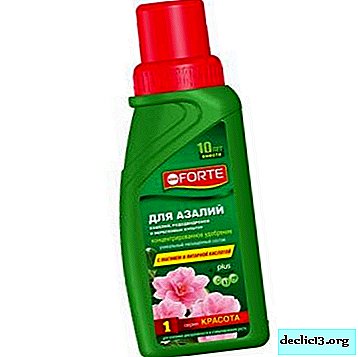 Bona forte - liquid fertilizer, contains:
Bona forte - liquid fertilizer, contains:- NPK;
- magnesium;
- vitamins;
- succinic acid;
- trace elements in chelated form.
It is used both for root top dressing (20 ml per 3 l of water), and for spraying on leaves (10 ml per 3 l of water) once a month in the autumn-winter period.
What drugs will help the garden beauty?
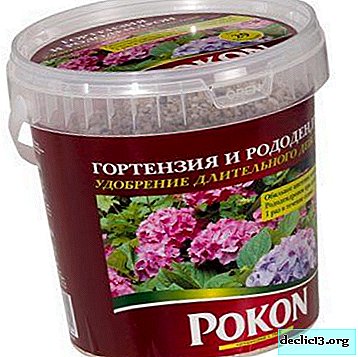 Pokon - granular fertilizer with a high content of magnesium.
Pokon - granular fertilizer with a high content of magnesium.They pour it into the trunk circle and water the bush abundantly.
Pokon dissolves slowly in the soil and provides azalea with nutrients until the fall.
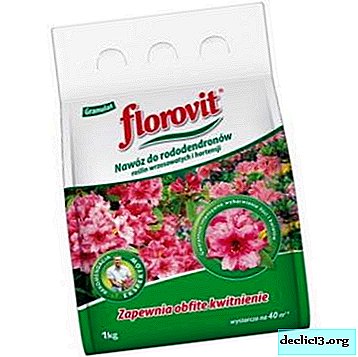 FLOROVIT - dry fertilizer, contains:
FLOROVIT - dry fertilizer, contains:- magnesium;
- sulfur;
- iron;
- manganese;
- a large amount of potassium, which increases the frost resistance of the bush.
Helps maintain proper soil acidity. It can be applied after flowering (no later than August 15) in an amount of 40 g under the bush.
After fertilizing, the soil must be watered well.
Schedule
- 1st - in late July and early August, when flowering ended and the laying of flower buds for next year began - a complex fertilizer for rhododendrons.
- 2nd - in late autumn - the application of phosphorus and potassium (30 g of superphosphate and 15 g of potassium sulfate per bush) and complex fertilizers with trace elements, but without nitrogen.
- 3rd - mulching before shelter for the winter and preparation of heather compost.
Step-by-step instruction
 2-3 weeks after the flowering of the bush (end of July), organic fertilizing is applied to the soil:
2-3 weeks after the flowering of the bush (end of July), organic fertilizing is applied to the soil:
- Manure is bred in warm water in a ratio of 1:10.
- Insist a few days before the end of fermentation.
- Then bred again to a light brown color.
- Water the plants under the root.
You can add potassium sulfate (20 g) and superphosphate (20 g) to the solution - on a ten-liter bucket.
Mulching:
- pour a layer of high peat under the bush (20-30 cm), mix gently with soil;
- collect fallen needles, sprinkle with a layer of 5 cm around the bush, mix with the ground, trying not to damage the roots;
- chop the pine bark and sprinkle around the bush with a layer of a few centimeters;
- 10 cm of soil from areas of a pine forest where lingonberries and rosemary grow, - coniferous sod - carefully dig out, trying not to mix the layers, and lay around the bush.
Mineral fertilizing:
- Dilute 30 g of superphosphate, 15 g of potassium sulfate and 10 g of complex mineral fertilizer in 10 l of water. Pour under the root.Top dressing accelerates the lignification of shoots.
- Dilute 20 g of ammonium sulfate, 10 g of potassium sulfate and 10 g of superphosphate in 10 l of water and pour under the root.
If a mistake was made
| Errors in feeding | What to do |
|---|---|
| Young plants fed granular fertilizer, which is poorly absorbed | Water abundantly after top dressing. |
| After applying granular fertilizer, rhododendron began to form new shoots that do not have time to lignify in winter and can freeze. | Use granular fertilizers, not designed for use in cold climates, for example, Russian-made |
| They fed rhododendron with ash, which reduces the acidity of the soil - this can lead to chlorosis | Add physiologically acidic mineral fertilizers to the soil |
| Used fertilizers containing chlorine (kills beneficial fungal microorganisms) | Mulch the bush with coniferous turf containing beneficial microscopic fungi |
| They brought in too much superphosphate - iron washes out of the soil | Feed with iron-containing fertilizer (Ferovit) |
Problems and their prevention
 In order to feed the rhododendron in the fall, benefit the plant and not harm it, you need to adhere to certain rules:
In order to feed the rhododendron in the fall, benefit the plant and not harm it, you need to adhere to certain rules:
- it is advisable to make all top dressing in liquid form;
- when applying fertilizers in granular form under the root, water the plant abundantly;
- it is necessary to add acidifying microelements to the soil;
- when feeding with complex mineral fertilizers, nitrogen free ones should be used.
Useful video
Video about plant nutrition in the autumn:
Conclusion
For abundant flowering of rhododendrons and healthy development, they need to be properly fertilized. Autumn top dressing will help plants survive the winter and delight with beautiful flowers for next year.

 "Good power" - liquid top dressing containing the whole complex of nutrients:
"Good power" - liquid top dressing containing the whole complex of nutrients: Bona forte - liquid fertilizer, contains:
Bona forte - liquid fertilizer, contains: Pokon - granular fertilizer with a high content of magnesium.
Pokon - granular fertilizer with a high content of magnesium. FLOROVIT - dry fertilizer, contains:
FLOROVIT - dry fertilizer, contains:


